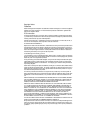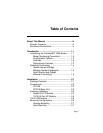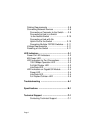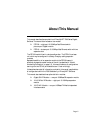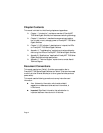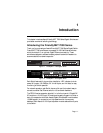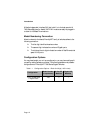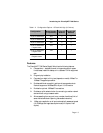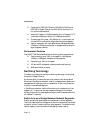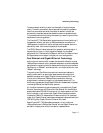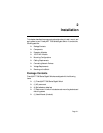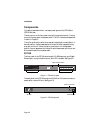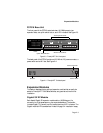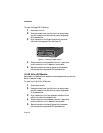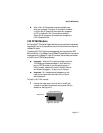Introduction
Page 1-4
❑
Complies with IEEE 802.3 Ethernet, IEEE 802.3u Fast Ethernet,
IEEE 802.3z Gigabit Ethernet, and IEEE 802.3x flow control (in
full-duplex mode) standards
❑
Works with Category 3 (10Mbps operation only) or Category 5 UTP
(unshielded twisted-pair) cable for 10/100Mbps connections
❑
Provides power, MII power, 100/10Mbps, full- or half-duplex, and
link/data LEDs to aid network diagnosis and simple management
❑
Ideal for deployment with high-speed servers, dedicated bandwidth
(10Mbps or 100Mbps) workgroups, or as a segmentation device for
larger congested networks
Performance Features
FriendlyNET 7000 Series Switches have the following performance features:
❑
Data forwarding rate at 100% of wire-speed, or 148,800pps at
100Mbps, 14,880pps at 10Mbps for 64-byte packets
❑
Data filtering at 100% of wire-speed
❑
12K active MAC address entry table per device (self-learning)
❑
4MB packet buffer per device
Switching Technology
This section provides a brief overview of switching technology, including Fast
Ethernet and Gigabit Ethernet.
An Ethernet switch is a device that can direct network traffic among several
Ethernet and Fast Ethernet networks. A switch increases network capacity and
decreases network loading by making it possible for a LAN to be divided into
multiple, unique dedicated
segments.
In Fast Ethernet networks, a switch allows chaining of hubs beyond the “two-
repeater limit.” A switch can be used to separate the network into different
collision domains, which allows expansion beyond the 205 meter diameter limit
for 100Base-TX networks.
Switch Acts as a Bridge Between Network Segments
A switch acts as a high-speed selective bridge between individual segments.
Traffic that needs to go from one segment to another is automatically forwarded
by a switch, without interfering with any other segments. This allows the total
network capacity to be multiplied while decreasing network loading.



